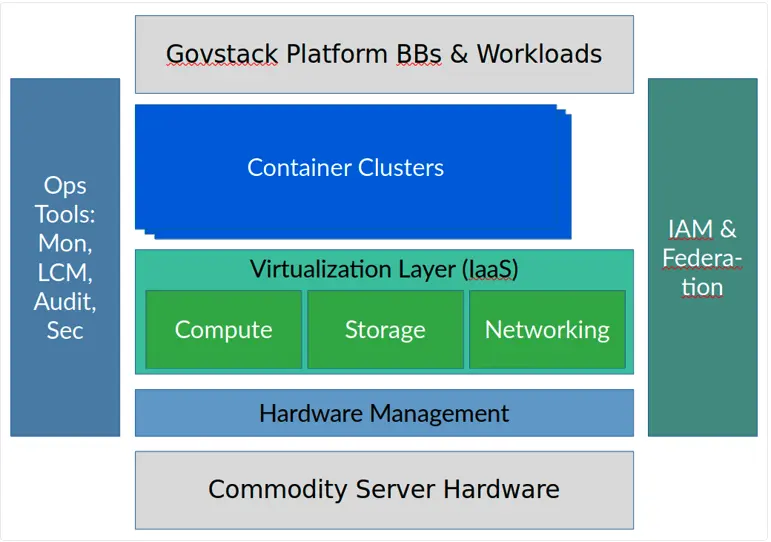
The GovStack initiative provides guidelines and frameworks supporting countries in their digital transformation by provinding them building blocks that help to provide digital services to their citizens. To this end, several working groups publish cross-cutting requirements, building blocks and technical specifications. One of the youngest building block is the Cloud Infrastructure Building Block Specification.
As a non-profit project SCS was able to participate in the working group Cloud Infrastructure. When Martin Wimmer introduced the inititiative at our Summit 2023 I was impressed and so happy to learn that we will be able to contribute our knowledge and expertise to this global approach. It took quite a while to understand how the buildings blocks are structured. But as soon as we got it, we were happy* to write the draft – our recommendations for building digital sovereign cloud infrastructure which is now published. With our blueprint, governments and their technical teams have a framework for their own cloud. And the best is, they can build the cloud model they want to integrate in their digital strategy – a lot of governments tend to use private clouds, but for scalability or as an offering for regional businesses they can use the same approach for public or hybrid clouds.
For us from SCS, participation in GovStack feels very natural as we share the same mindset. We want cloud or software users to be sovereign in their decisions for their digital transformation, in their choices of technology, and in the ability to control and design this technology. In fact, I really love to be part of this initiative, to support governments, and with this countries, to have a choice, to choose independency on a technological level. With the GovStack building block framework, governments can offer their citizens several digital services, based on sovereign cloud infrastructure. This is an important step for each country (including Germany). Many aspects of daily life are digital or digitally supported, and to be able to control their digital space themselves, to shape, and to develop it without unintended lock-in helps countries to strengthen their confidence, to be on par.
For us it is evident that SCS is completing the picture on the practical level – as SCS covers almost all requirements and recommendations of the specifications. And this is the second aspect of what I love: we are able to support countries to implement their cloud infrastructure – as they want to shape it, in the countries or with trusted hosters. So, SCS is used like it was intended: digitally sovereign, open source, mature cloud infrastructure. For governement clouds, for regional OSPOs, as base for a global network, developed by a global, diverse community. For me, SCS enhances its potential tremendously with GovStack. But, I am a little pre-occupied, maybe…